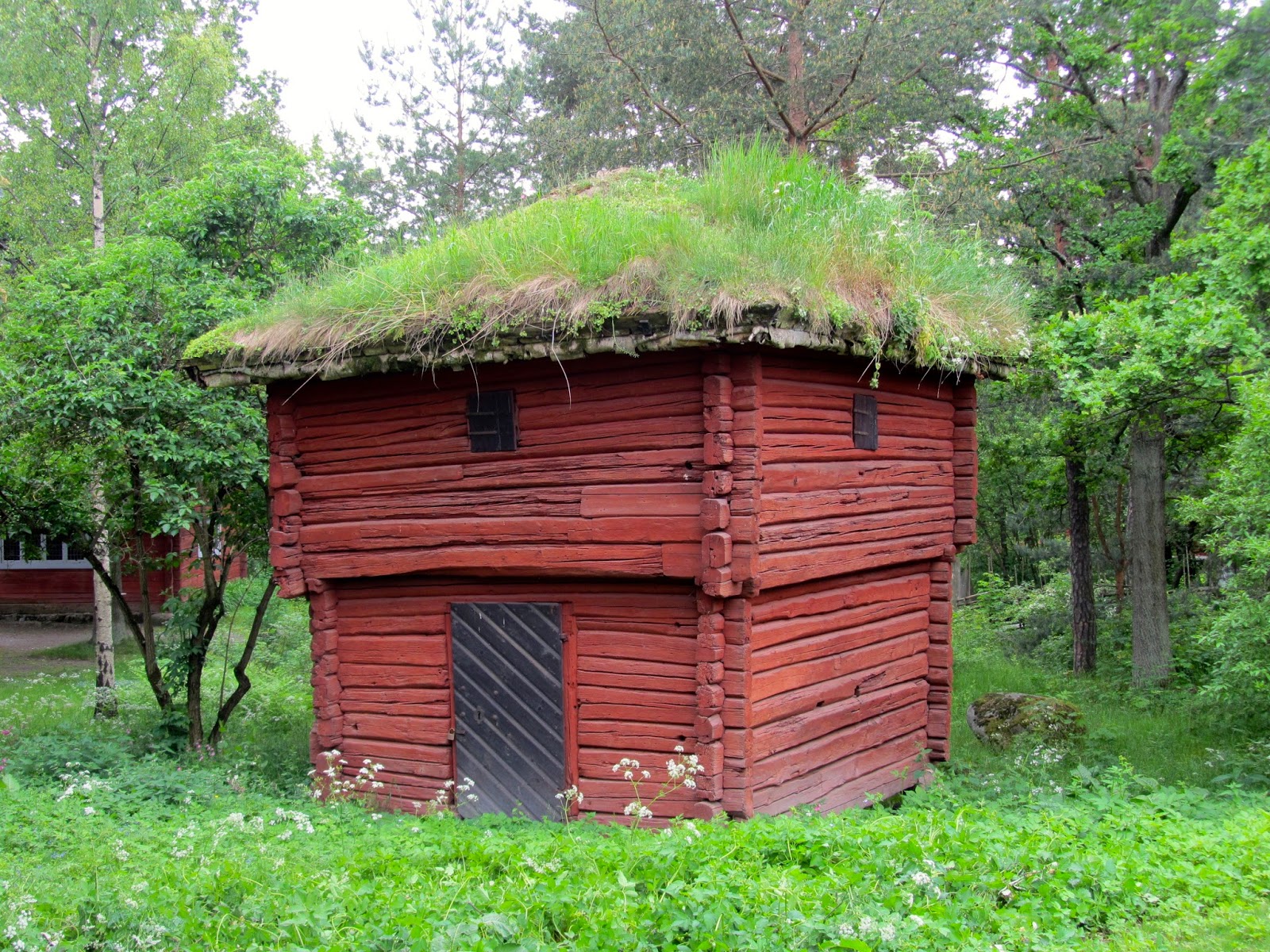On our last day in Stockholm, Tim and I had a great time exploring Skansen, an enormous open-air museum, representing five centuries of Swedish history. Many of the buildings were original and had been transported to Skansen to represent a distinct time or location in Swedish history, and they were staffed by craftspeople and actors who were happy to chat about the issues of the day/culture they were representing. Here's a taste of what we saw:
Glass blowers at work. They were the only craftspeople we saw in modern clothing:
A very lively shopkeeper who explained to us what it was like to keep a general store in 19th century Stockholm. Basically, if someone from the surrounding islands wanted to sell anything, they were required by law to bring their wares to Stockholm proper (where they would pay a tax). Only one day a year were they allowed to sell their goods outside of the city gates.
A woodworker. He was working in a walking stick for one of his fellow Skansen actors.
The architecture was fabulous. This house below reminded me (and Liam when he saw the picture) of the house of the Russian folk witch, Baba Yaga.
This woman showed us how to make Swedish flat bread from barley (she also gave us many tasty samples). She said baking with her mother and grandmother was one of her fondest childhood memories. They would work all day, baking in a wood-fueled oven, making a week's supply and storing it in a wooden chest.
We loved the many fences made from local wood in Sweden. We hope to recreate a much smaller, foot-high version in our own garden some day.
This woman talked to us about the different people who lived in her home; the contract the house's grandmother made with her children when she passed over the house; the role of the house's servant; and how to dye wool by boiling it with plants (which some of her housemates were doing outside over a small camp fire).

We also loved the roof gardens. Note the roll of birch bark at the edge--it turns out the entire roof is lined with bark to keep out water.
The Finns used birch bark for all sorts of things--bags, baskets, and even shoes.
A working mill.
A farm home with Biblical scenes painted on the walls.
A Samish house. The Sami people are indigenous to Sweden.



















No comments:
Post a Comment